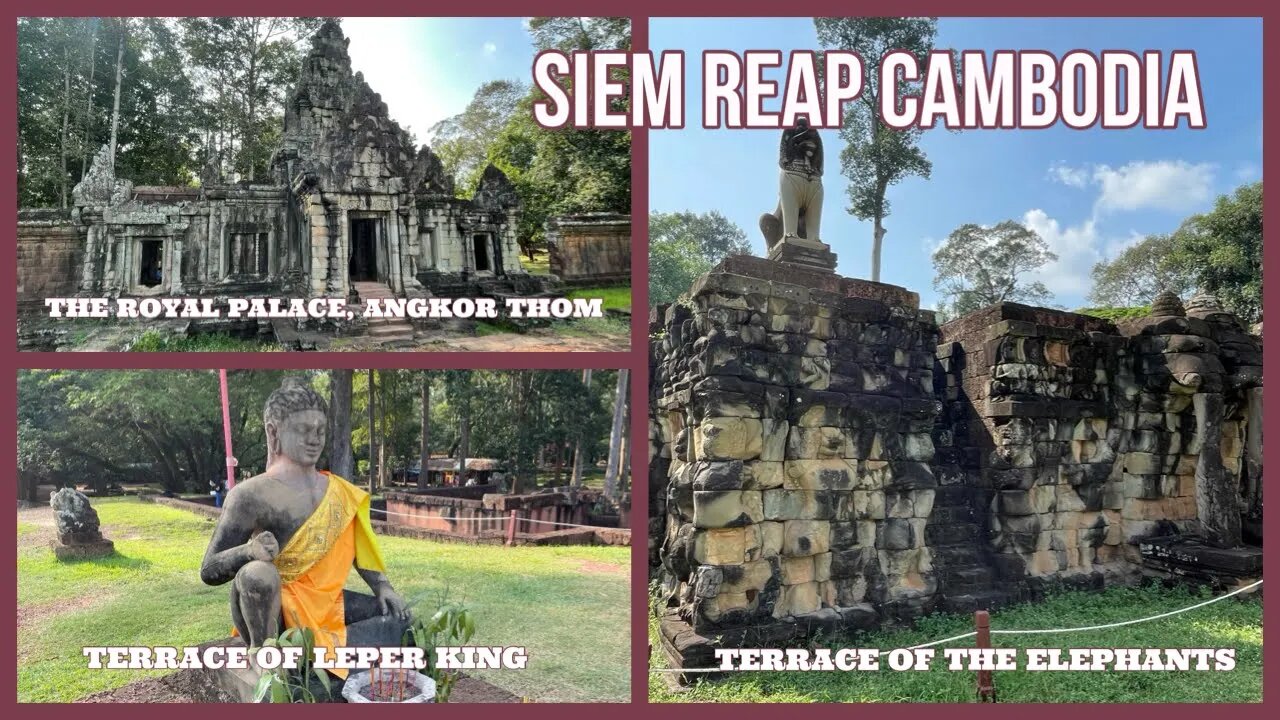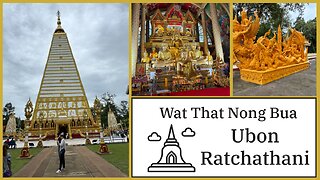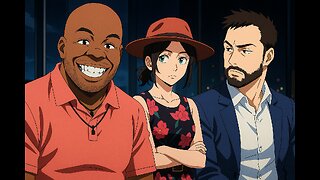Premium Only Content

Terrace of Leper King, Terrace of the Elephants, The Royal Palace Angkor Thom - Siem Reap Cambodia
The Royal Palace, Angkor Thom
The Royal Palace was first built by king Suryavarman I and used continuously from the 11th to the late 16th century AD. During that period, the area was transformed and restored several times. Recent excavations have revealed many remains, such as a 10th-century temple which was built by a minister to Yasovarman I, was probably considered to be this minister's residence.
Most of the royal palace buildings were constructed by using perishable materials because they would have been non-religious in nature.
Terrace of the Elephants
The Terrace of the Elephants ព្រះលានជល់ដំរ is part of the walled city of Angkor Thom, a ruined temple complex in Cambodia. The terrace was used by Angkor's king Jayavarman VII as a platform from which to view his victorious returning army. It was attached to the palace of Phimeanakas ប្រាសាទភិមានអាកាស of which only a few ruins remain. The terrace is named for the carvings of elephants on its eastern face.
Terrace of Leper King
The terrace of the Leper King carries on the theme of grandeur that characterises the building during Jayavarman VII's reign. It is faced with dramatic bas-reliefs, both on the interior and exterior. During clearing, the EFEO found a second wall with bas-relief similar in composition to those of the outer wall.
Some archaeologists believe that this second wall is evidence of a late rites, two meters wide of laterite faced with sandstone. It collapsed and a second wall of the materials, two meters wide, was built right in front of it without any of the rubble being cleared. Recently, the EFEO has created a false corridor which allows visitor to inspect the relief on the first wall.
The curious name of this terrace refers to a statue of the Leper King that is on the platform of the terrace. The one you see today is a copy. The original is in the court-yard of the National Museum in Phnom Penh. the figure is depicted in a seated position with his right knee raised, a position some art historians consider to be Javanese-style. Its nakedness is unusual in Khmer art.
Who was the Leper King? Mystery and uncertainty surround the origin of the name. The long-held theory that Jayavarman VII was a leper and that is why he built so many hospitals throughout the empire has no historical support whatsoever. Some historians think the figure represents Kubera, god of wealth, or Yasovaraman I, both of whom were allegedly lepers.
This site is unique in the historical park. It is also a nice break from seeing all of the temples. It’s a must see if you come here for a visit.
Enjoy the video!
If you would like to support the channel through unique items only found here visit my store
https://youtube.com/channel/UC7Nk0oxkpoyOXvZ-BESD6-g/store
You can also see my videos on Rumble, Bitchute, Odysee and Subscribe Star. If you have any questions or comments and wish to contact me directly I can be reached by email at endlessjourneytravels@gmail.com
https://www.bitchute.com/channel/pYUe8EgYcUMc/
https://odysee.com/$/latest/@EndlessJourney
https://rumble.com/c/EndlessJourney
https://www.subscribestar.com/endless-journey
Follow me on Twitter @AEndlessJourney
#endlessjourney
#travel
#cambodia
-
 9:59
9:59
Endless Journey
6 days agoWat Phra That Nong Bua - Unique Mahabodhi Inspired Temple - Ubon Ratchathani Thailand 2025
121 -
 3:00:28
3:00:28
IsaiahLCarter
1 day ago $9.13 earnedWedding Bells and Gnostic Spells || APOSTATE RADIO 024 (with Keri Smith)
57.9K3 -
 12:14:58
12:14:58
Spartan
14 hours agoSpartan - Pro Halo Player for OMiT | Scrims vs C9 then ranked
57.6K6 -
 2:16:19
2:16:19
vivafrei
18 hours agoEp. 273: Russia Hoax CONFIRMED! Will ARRESTS Follow? Trump SUES WSJ! Epstein Docs Release? & MORE!
151K165 -
 4:15:15
4:15:15
EricJohnPizzaArtist
6 days agoAwesome Sauce PIZZA ART LIVE Ep. #55: Wendy Wild!
52.1K2 -
 11:54
11:54
Tundra Tactical
11 hours ago $7.36 earnedIf You Laugh at These Gun Memes, the ATF Gets Your Dog – Tundy Meme Review
64.6K2 -
 4:08:53
4:08:53
Cewpins
7 hours agoSunday Sesh🍃weed💨420🔥!Giveaway !mj
24K11 -
 2:05:32
2:05:32
Nerdrotic
10 hours ago $3.72 earnedForbidden Inventions and Shadow Cover-ups | Forbidden Frontier #109
47.9K6 -
 2:57:01
2:57:01
JahBlessGames
7 hours ago🎉THPS w/ Cheap | Variety Ting | Music too??
10.1K1 -
 3:21:46
3:21:46
Barry Cunningham
17 hours agoPRESIDENT TRUMP HAS EXPOSED BARACK OBAMA AS A TRAITOR! AND MORE NEWS!
60.7K123